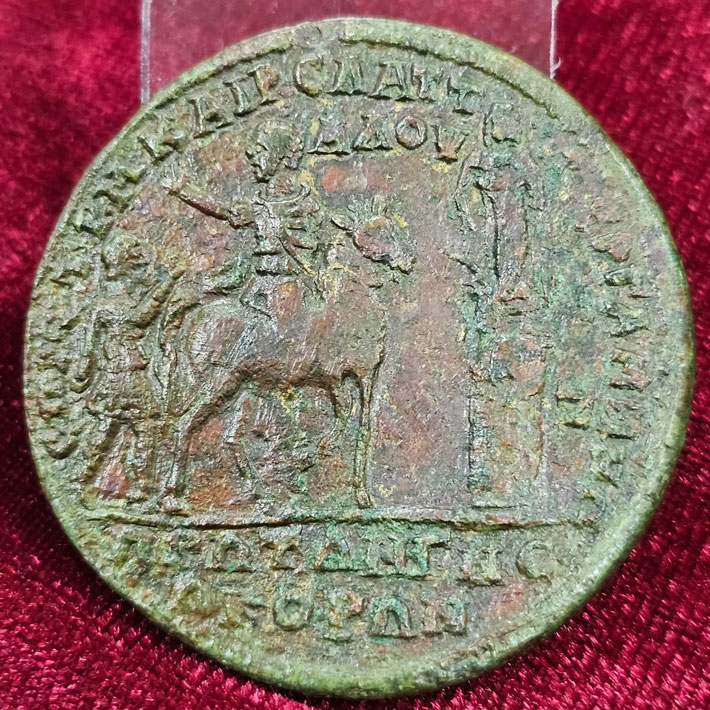 NOVA VARBOVKA, BULGARIA—According to a Live Science report, a farmer discovered two Roman graves while plowing a field in northern Bulgaria late last year. Archaeologists from the Veliko Tarnovo Regional Museum of History dated the graves to the third century A.D. Both of the brick graves had been lined with plaster and covered with large slabs of limestone. The remains of a man and a woman between the ages of 45 and 60 at the time of death were found in the larger tomb, which measures about 10 feet long. They were buried with jewelry made of glass beads and gold, six coins dated to between A.D. 200 and 225, a lamp, a leather shoe, and vessels made of ceramic and glass. Three of the glass vessels were lacrimaria, or small flasks for collecting the tears of the mourners. The smaller grave contained the remains of a child aged between two and three years old at the time of death. A bronze medallion depicting the Roman emperor Caracalla, who ruled from A.D. 198 to 217, was recovered from this grave. Archaeologist Kalin Chakarov thinks the deceased may have been members of the same family, but DNA analysis of samples of the bones has not yet been conducted. “The discovery of such tombs in the territory of Bulgaria is not a surprise, since the climate and soils are very good for growing agricultural crops,” added museum director Ivan Tsarov. The researchers plan to look for an estate where these people might have lived. To read about artifacts recovered from a Roman frontier camp in northern Bulgaria, go to "Legionary Personal Effects."
NOVA VARBOVKA, BULGARIA—According to a Live Science report, a farmer discovered two Roman graves while plowing a field in northern Bulgaria late last year. Archaeologists from the Veliko Tarnovo Regional Museum of History dated the graves to the third century A.D. Both of the brick graves had been lined with plaster and covered with large slabs of limestone. The remains of a man and a woman between the ages of 45 and 60 at the time of death were found in the larger tomb, which measures about 10 feet long. They were buried with jewelry made of glass beads and gold, six coins dated to between A.D. 200 and 225, a lamp, a leather shoe, and vessels made of ceramic and glass. Three of the glass vessels were lacrimaria, or small flasks for collecting the tears of the mourners. The smaller grave contained the remains of a child aged between two and three years old at the time of death. A bronze medallion depicting the Roman emperor Caracalla, who ruled from A.D. 198 to 217, was recovered from this grave. Archaeologist Kalin Chakarov thinks the deceased may have been members of the same family, but DNA analysis of samples of the bones has not yet been conducted. “The discovery of such tombs in the territory of Bulgaria is not a surprise, since the climate and soils are very good for growing agricultural crops,” added museum director Ivan Tsarov. The researchers plan to look for an estate where these people might have lived. To read about artifacts recovered from a Roman frontier camp in northern Bulgaria, go to "Legionary Personal Effects."
Remains of a Possible Roman-Era Family Unearthed in Bulgaria
